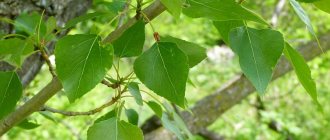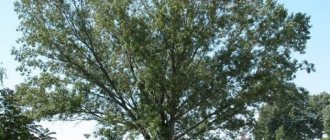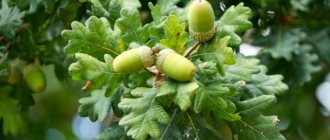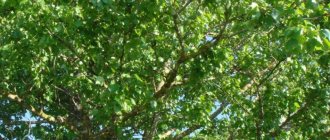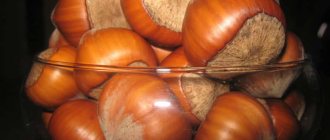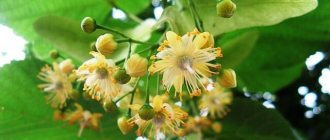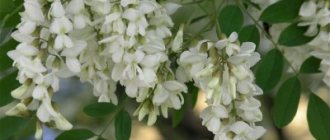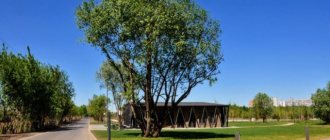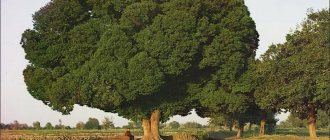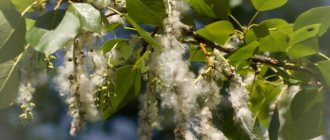It is well known that most medicinal plants are nature's treasure. Our ancestors used them for medicinal purposes several centuries ago. The nutritional properties of many herbs and rhizomes, which were widely used in cooking, are also known. Thanks to the accumulated store of knowledge, modern healers and official medicine actively use them for good purposes.
For example, the well-known black poplar tree (sedge) is associated with light fluff and summer days. This long-liver is famous for its phytoncidal properties, as it cleanses the air of pollutants and pathogens. Almost every part of this tree is valued. We will talk about this and more today.
General information about the plant
The black poplar tree (photo presented in the article) of the Willow family sometimes reaches 25 meters in height. It has a fairly wide crown and yellowish bark, which becomes a dirty gray hue with age. The rhizomes are long, extending several meters deep into the soil. The flowers of the tree are small, collected in beautiful inflorescences, similar to earrings.
The leaves of the tree are triangular in shape. The fruits look like small boxes containing seeds. They begin to ripen from April to June, and then fly away with the wind far from the mother’s “nest.” The tree prefers ecologically clean territorial zones: forest thickets, edges, floodplains and low mountains. Grows in China, European countries, Central Asia and North Africa. Black poplar tolerates frost well, loves a lot of light, moist silty and sandy soils.
Botanical description
Sedum is a large deciduous plant. The trunks are up to 30 m in height or more, reach 1.5 m in thickness, and rarely branch. The bark of young trees is gray. In adults, it is almost black, thick, covered with deep cracks in the lower part, closer to the top it is slightly lighter and looks smoother. The root system has a complex structure, including anchor roots growing over the surface, deepening at an angle and penetrating to great depths. If the trunks are covered with silt or sand, adventitious roots will form over time . This structure helps to supply trees with a large amount of moisture, ensures rapid growth and retention in a stable position in adverse weather conditions.
The side shoots are usually located at an acute angle, less often almost perpendicular to the trunk, forming a wide ovoid or cylindrical crown. In old trees it becomes spreading and tent-shaped.
The apical buds are brown, elongated, rather large, up to 15 mm, with sharp tips, covered with a thick resinous coating. The lateral ones are slightly smaller, tightly pressed against the shoots. As they swell, they begin to shine, become sticky, and emit a strong fragrant aroma.
The leaves are simple, smooth, have thin flattened petioles, and are arranged alternately . Rounded and wide at the base, they taper to a pointed apex. The length of the plates is about 10 cm, width - 4–5 cm. When blooming, they are sticky, light green, covered with a thin network of veins. The edges are finely serrated. Mature leaves are dark green, slightly lighter on the back.
A variety of sedge is pyramidal or Italian poplar (Latin Populus nigra var. piramidalis). It was first discovered in wild form on the Apennine Peninsula. The crown of this poplar is narrow, elongated, starting almost from the soil surface, the shoots grow almost vertically upward, parallel to the trunk. The leaves are smaller than those of sedge and diamond-shaped. The plant reaches 35 m in height . Slender, straight-trunked trees with neat, dense crowns are suitable for laying out alleys, planting along roads and landscaping city streets.
Biochemical composition
A number of valuable substances are contained in the buds of this tree. During scientific research, experts discovered in them such biological components as resin, flavonoids, leukoanthocyanins, fatty and essential oils, tannins, salicin, populin.
Also, black poplar buds are rich in malic, ascorbic and gallic acids. No less useful elements are found in the bark and leaves of the plant: phenolcarbonic and organic acids, alkaloids, carotenoids, isoprenoids and higher hydrocarbons.
Collection and preparation
For medicinal purposes, leaf buds, black poplar leaves, and less often branches and bark are harvested.
The buds are collected in early spring, at the beginning of the black poplar flowering, in April, when they are swollen but have not yet blossomed. They cut it off with their hands. In order not to disturb the growth and development of the tree, collection is carried out only from the lower side shoots.
Initially, the raw materials are dried in the open air, in the shade, under a canopy or indoors with good air ventilation, spread in a thin layer of 1-2 cm, not forgetting to stir periodically. It is permissible to dry it in the sun.
An important condition is that the initial drying should be carried out in a cool, unheated room (place). Otherwise, the buds begin to bloom and loss of essential oil occurs.
Color of finished raw materials: greenish, brownish-yellow. Smell: peculiar, balsamic. Taste: bitter.
Black bark poplar is collected in early spring from cut trees or branches. Dry as usual.
Finished dried raw materials are stored in boxes or bags made of natural materials in a dry room with good air ventilation. Shelf life of black poplar: two years.
Medical use
It has been scientifically proven that black poplar buds have anti-inflammatory, antiallergic, diuretic, bactericidal, antiseptic and analgesic properties. The use of drugs based on this natural component is indicated for chronic bronchitis. It has been experimentally proven that internal use helps facilitate sputum discharge.
Health professionals value the tree's antimicrobial and soothing qualities, which it inherits from willow. Due to the presence of so many medicinal properties, infusions from the kidneys restore intestinal activity and relieve the unpleasant symptoms of an upset stomach. Traditional healers widely use liquid extracts for urinary incontinence, cystitis, pathological processes of the genitourinary system, as well as spermatorrhea and kidney diseases.
Poplar leaves and buds are known to help relieve excessive sexual arousal. In addition, medicines from parts of this plant are prescribed to patients suffering from cervical cystitis and chronic urethritis. For maximum therapeutic effect, it is recommended to instill an oil solution into the urethra using a catheter.
The natural remedy relieves fatigue, weakness, and nervous excitability well. Also used for diarrhea, arthritis, intestinal atony, hemorrhoids and colds. Sedum (black poplar) helps regulate the menstrual cycle during dysmenorrhea and strengthen weakened immunity. It has proven itself well in the treatment of malignant tumors (together with other herbal and medicinal preparations), rheumatism, scurvy, tuberculosis and gout.
The range of indications for the product is quite wide due to the presence of valuable substances. Practice has proven that the buds of the plant have a sedative, hemostatic and expectorant effect. From them a highly effective ointment is obtained, which is used as an emollient, disinfectant and antipyretic. It can treat staphylococcal and fungal skin diseases, various wounds and boils, as well as herpetic rashes, ulcers, burns and even alopecia.
An infusion of kidneys is recommended as the best remedy for a runny nose. A steamed kidney applied to the affected area will also help get rid of toothache. Experts say that tea made from this raw material will relieve vitamin deficiency and restore strength. The diverse therapeutic orientation of the tree allows us to call it one of the best homeopathic remedies.
Contraindications
In order for the treatment to be effective and the results to last, before starting it, you should definitely take into account the benefits of black poplar and the harm that it can cause if used incorrectly.
The buds of the plant contain components that can irritate the gastrointestinal tract, kidneys and bladder, so when taking them internally, be sure to follow the recommended dosage. If the dosage is exceeded, nausea may occur.
Although black poplar preparations are recommended for treatment
- stomach,
- intestines,
- kidney,
however, if you have acute or chronic diseases of these organs, it is better to consult your doctor first.
You should also avoid taking black poplar internally during pregnancy. Individual intolerance to both internal and external use of plant preparations is possible.
Sources:
D.S. Ivashin, Z.F. Katina. Medicinal plants of Ukraine.
Advice from the traditional healer Evdokia. Herbalist, illustrated reference book.
Do it yourself. Supplement to the magazine "Ogonyok", No. 1, 1998.
I.N. Putyrsky, V. Prokhorov. Universal encyclopedia of medicinal plants.
V.V. Reshetnyak. Herbalist.
A.P. Popov. Medicinal plants in folk medicine.
Other uses
Black poplar is widely used in industry, construction, protective afforestation, land reclamation to strengthen ravines, slopes and banks. Of course, the tree is especially popular in forestry; inexpensive wood is obtained from it, which is subsequently used for the manufacture of cooperage, turning and carpentry, as well as plywood, containers, sleepers, matches, paper, viscose and cellulose. The bark, leaves and buds are used for dyeing leather materials and tanning. Essential oils are suitable for fixative and fragrance in soap.
Types and varieties
The poplar genus, in addition to the black poplar species, includes more than 95 species, which are divided into 6 groups (sections) and hybrid species:
- Mexican poplars (Abaso): Mexican poplar – Populus mexicana Ex DC. and etc.
- delta poplars (Aigeiros):
- delta poplar – Populus deltoides Bartram ex Marshall;
Populus fremontii Watson et al.
- Leucoid poplars (Leucoides):
- poplar – Populus heterophylla;
Populus wilsonii K.Schneid. and etc.
- Populus:
- silver poplar (white) – Populus alba;
- aspen (trembling poplar) – Populus tremula and others.
aspen poplar – Populus tremuloides;
- balsam poplars (Tacamahaca):
- balsam poplar – Populus balsamifera;
laurel poplar – Populus laurifolia and others.
- turanga (Turanga): Euphrates turanga – Populus euphratica Olivier;
- poplar (Turanga sisolifolia) – Populus pruinosa Schrenk and others.
- Berlin poplar – Populus xberolinensis Dippe – a hybrid of laurel poplar and black poplar;
Some of them, for example, common aspen, are used for medicinal purposes.
Black poplar belongs to the group of delta-shaped poplars.
Black poplar. Latin name : Populus nigra L.
Black poplar. Other names : osokor, osokor, sokora, sokorina, yasokor, etc.
Effective recipes
Sedge (tree and its parts) has excellent anti-inflammatory properties. For the treatment of gout, respiratory tract, polyarthritis, urethritis and cystitis, the following recipe, proven over the years, is used. For 10 grams of kidneys, take two glasses of boiling water. The solution is infused for 120 minutes. Used in a filtered state, one hundred grams.
For this purpose, an alcohol tincture is prepared. You need to pour 50 g of buds with half a liter of pure 40% alcohol. Leave the product for exactly 14 days in a dark place. After this, shake and strain using a sieve. Drink 30 drops three times a day before meals.
Medicinal infusion
We take poplar buds and vegetable oil (any) in proportions of 10:1. Boil the mixed mass over low heat for ten minutes. As a result, you will get a thick, homogeneous mixture (extract), which should be taken a dessert spoon three times a day. Has analgesic and anti-inflammatory effects.
Use oily liquid for sinusitis and runny nose, instilling two drops into each nostril. It is recommended for erosive gastritis and stomach ulcers: drink 5 g four times a day before meals. Tampons are also made from the solution, which help cure Trichomonas colpitis and cervical erosion.
Growing on site
Sedge propagates by seeds, root shoots, and cuttings. In favorable conditions, planting material easily takes root and begins to grow quickly.
The areas should be level or have a slight slope. It is undesirable to place black poplar in low-lying, often swampy areas . The tree does not tolerate heavy, clayey or salty soils. Moisture-permeable loams, sandstones, and black soil are suitable for it. Soil looseness should be average. The tree should not be planted near sidewalks, above infrastructure elements, or in front of the road. A powerful root system can destroy the coating and touch deep-lying pipes and cables. It is necessary to plant the plant at a distance of several meters from the walls of buildings and high fences.
Planting is done in September or spring after the snow melts . For one-year-old seedlings, holes measuring 60 × 60 cm are dug and organic fertilizers are added. Trees placed in soil are watered. During the season of active growth, it is advisable to feed them with phosphorus fertilizers and manure.
Black poplar grows 70–100 cm per year . It is necessary to trim damaged shoots and loosen the soil. During dry periods, it is necessary to water the trees with plenty of water. In the first years, you need to moisten the soil at least once a week, spending 20–25 liters of water per plant.
It is easy to propagate sedge by shoots and seeds . Cuttings take root in the ground within 4–5 weeks. They can be planted immediately in permanent places. The seeds provide 98 percent germination; simply drop them into loose soil and lightly sprinkle with soil.
